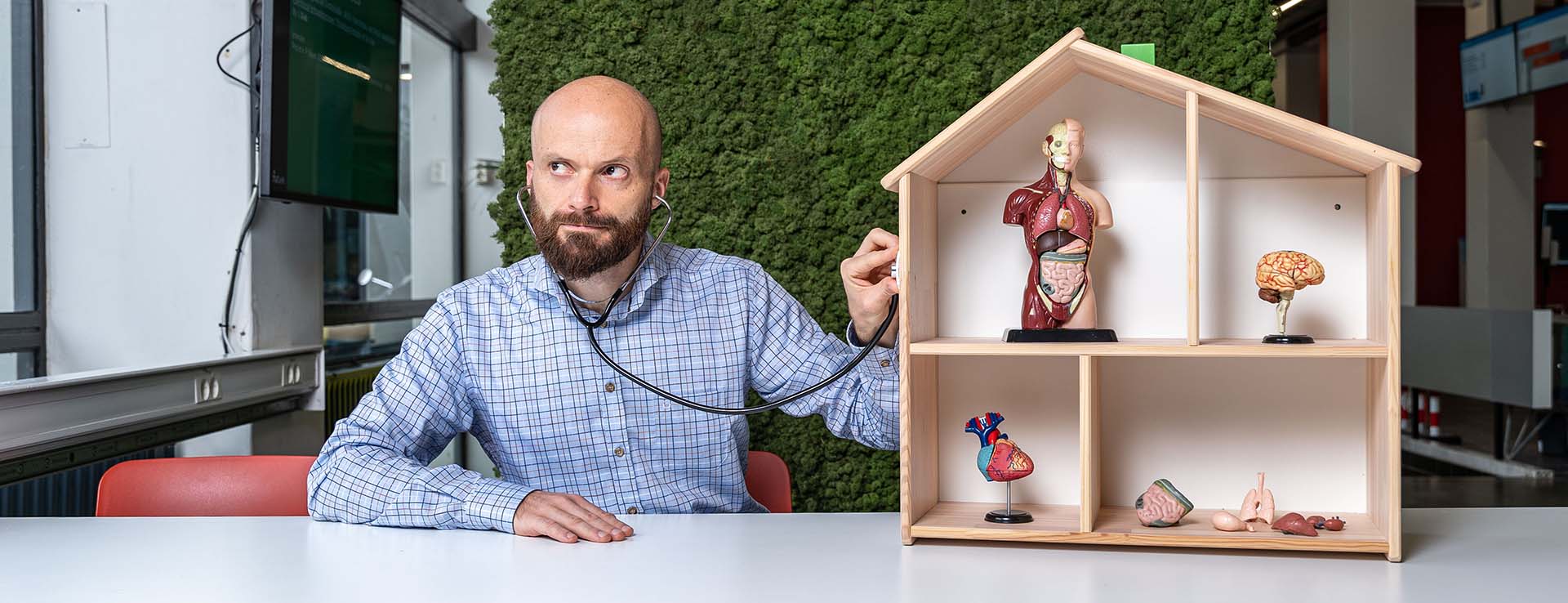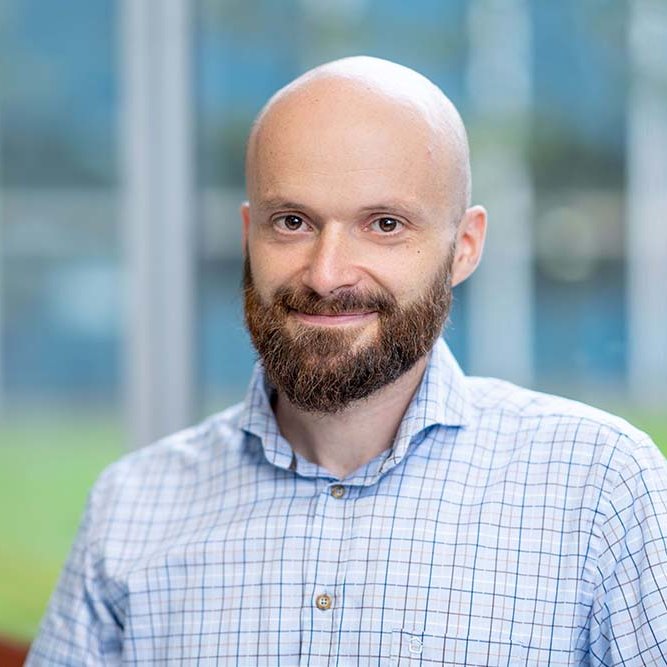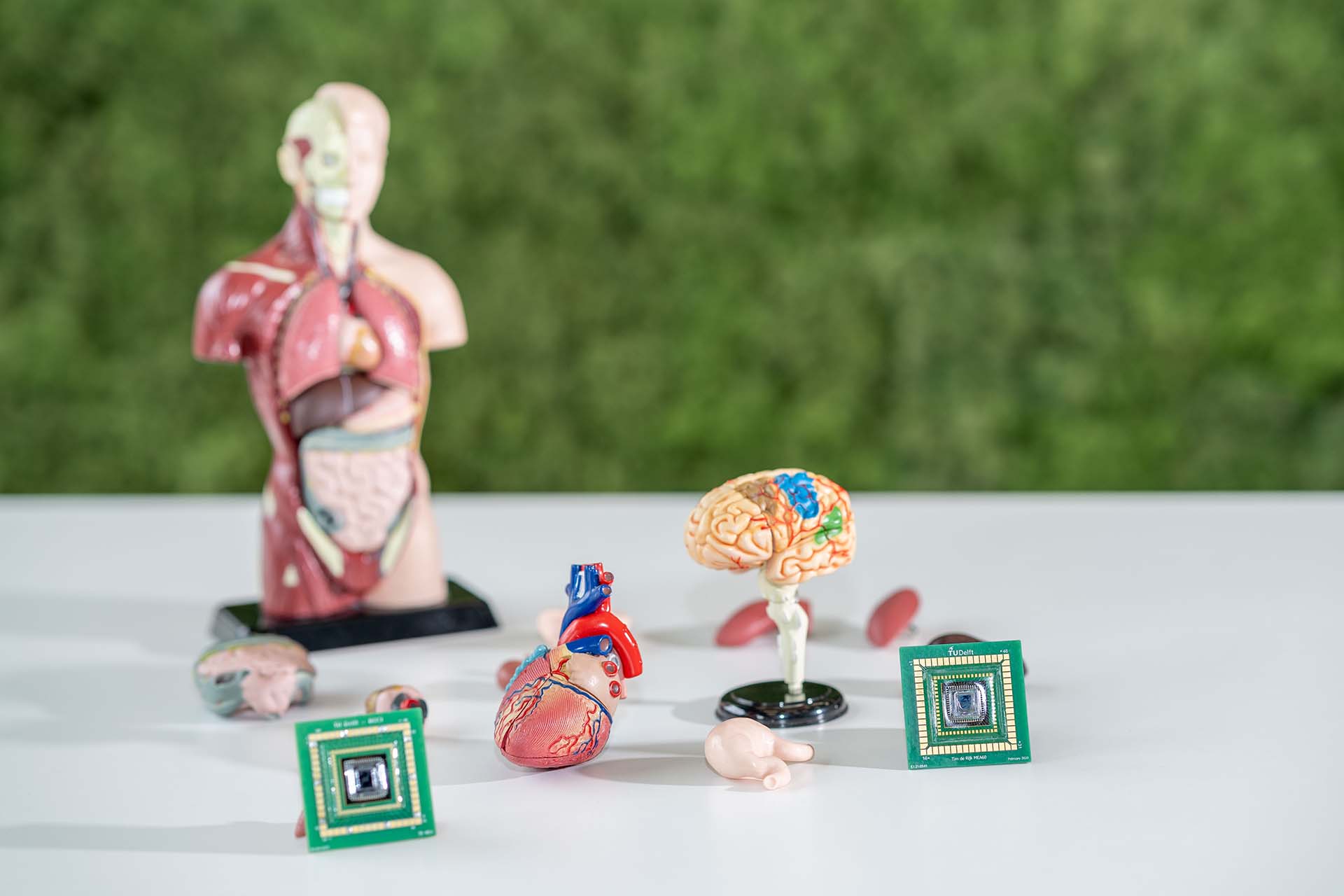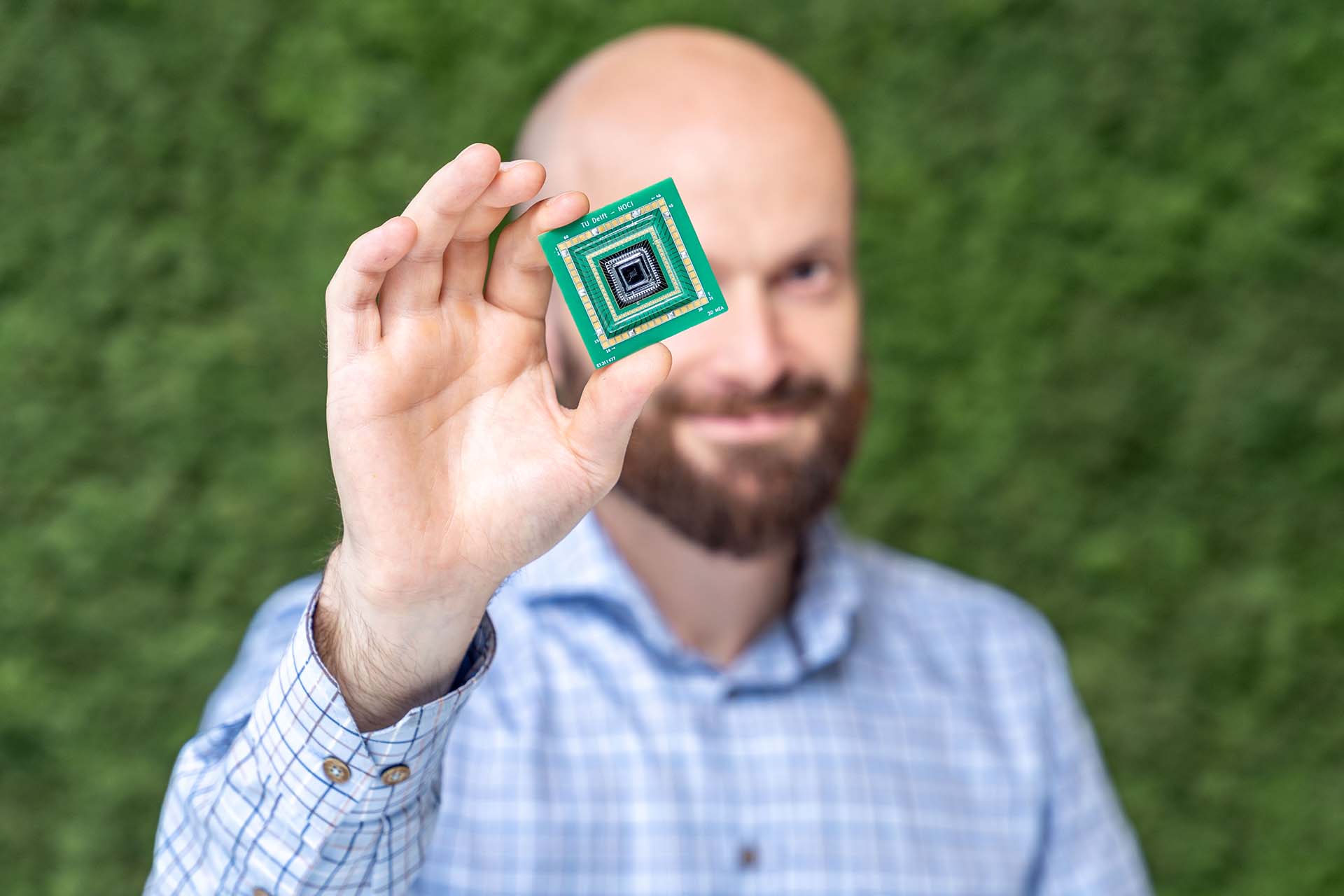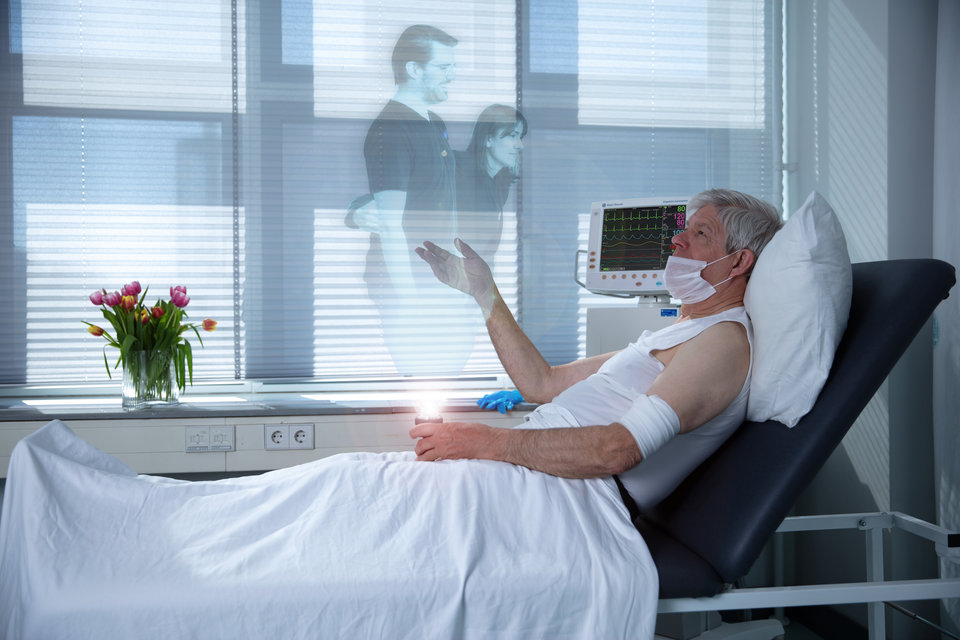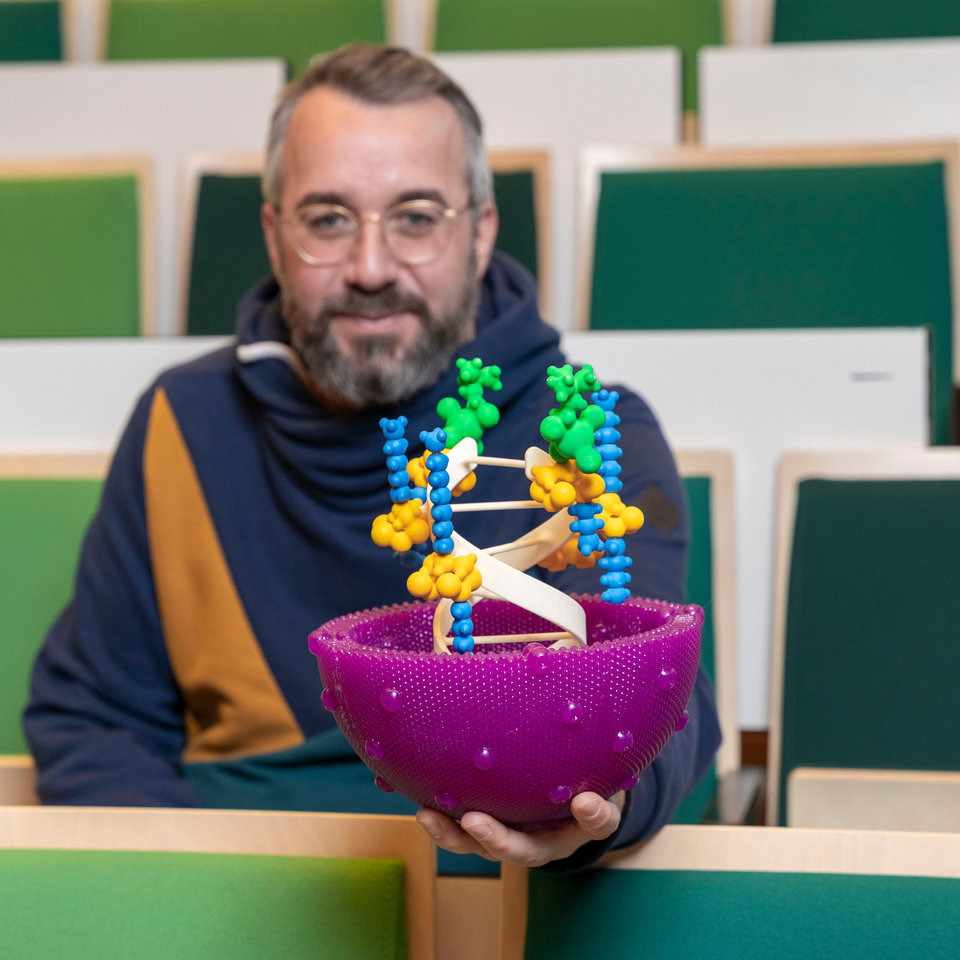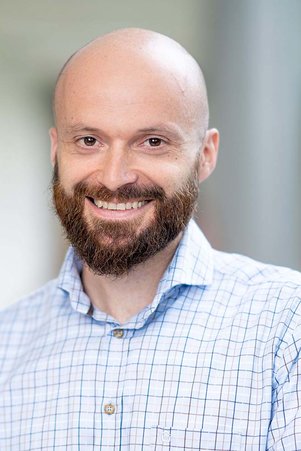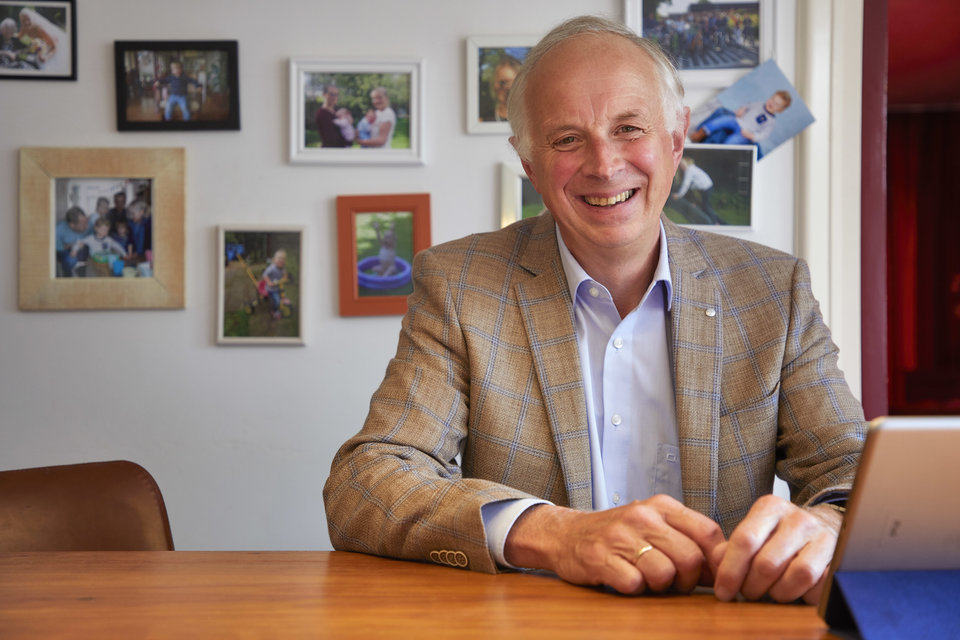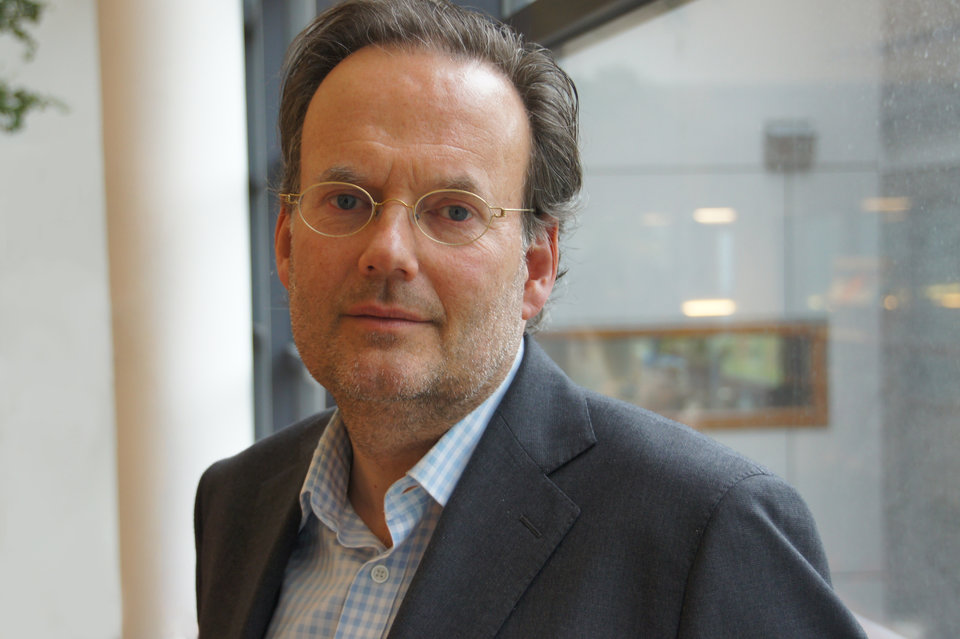Organ-on-chip: Creating a home for human cells outside of the body
Research that has a huge impact on healthcare and society
Associate professor Massimo Mastrangeli is the embodiment of enthusiasm for scientific research. He specifically exudes passion for his own field, namely that of organs-on-chip. “What I would like people to know about this field of research? That it’s amazing!”, exclaims Massimo.
“An organ-on-chip is a (micro)chip that contains human tissues or cells. It allows the tissue to feel “at home”, because the chip replicates aspects that the cells need, like artificial blood vessels that provide the cells with nutrients and oxygen, and stimulation through electricity, for example. Organs-on-chip allow us to deepen our knowledge of the human physiology, and can improve the drug development process.”
These different aspects of organs-on-chip inspire Massimo to develop them even further. But he explains that he cannot do it alone. “It is motivating to have a group of brilliant students that helps me develop ideas and push this technology further.” Because as a researcher – Massimo points out – you position yourself at the edge of knowledge. “We live with uncertainty. I’m faced with many challenges, aspects and possible directions in my work. That’s why I need collaborations, and particularly outside microelectronics. It’s fantastic to have complementary expertise in biology and biochemistry, especially in this complex field of organ-on-chip research.”
Home for cells away from home
Organs-on-chip are devices that aim to let parts of (human) organs and tissues feel as if they were in the body, except that they are in a synthetic environment: the tissues are placed on a chip. “We want to create a home for cells or tissues away from home”, Massimo illustrates.
“Organs-on-chip are the best approach, so far, to discover and deepen our knowledge of human physiology,” Massimo enthusiastically continues. “Organ-on-chip technology is the missing puzzle-piece in going from the fundamental tissue components back to the full human organism.”
The chips also play a huge role in improving drug development. On average it takes at least a decade to get new drugs approved. The costs for drug development are therefore astronomical and amount to billions of dollars per drug. And even then there is no guarantee that once the drug is approved, it will succeed.
“We believe that we can improve this process with organs-on-chip”, states Massimo. The standard cell cultures used in the first stage of drug development are simple models. They usually consist of a single layer of cells, and don’t allow for interaction between different types of cells. “That’s clearly not what we, as humans, look like”, Massimo continues. “We have to look at what the organ-tissue needs. Imagine for a moment that you happen to be heart tissue, consisting of different types of cells. Now, what do you need? You need to be perfused with nutrients, oxygen and other gasses by means of blood vessels. You are biological material, so you are typically soft and flexible and therefore you are comfortable in an environment made of soft materials. And you are likely made up out of young stem cells, so you need stimulation in order to grow and mature. Stimulation in terms of electricity, in terms of motion or mechanical (loadbearing) powers, in terms of light and chemistry.”
“We need to replicate these aspects and create a microenvironment for the tissue”, explains Massimo. “And we also have to keep the needs of researchers in mind. They need to know what’s happening inside the ‘house’. So we have to make sure that organs-on-chip can record signals. We also need to make them transparent for biologists to be able to optically see what’s happening inside. And we need to make them very small, in order for the devices to be more easily handled and produced in large quantities for them to be cheap. In other words, there are a lot of important details in producing a viable organ-on-chip.”
Organs, inside our body, are quite big. But they are composed of many replicas of the same type of subunits, which are called organoids. In their own (sub-milimetric) scale they do the exact same job as the entire organ. “Organoids have exactly the same size that we are used to handle within microtechnology”, explains Massimo. “When I learned about this, I was sold. That’s where it all came together for me: tissue engineering on the one hand, microtechnology on the other, and these fields joining in research on organs-on-chip.”
Developing a brain and heart
Massimo’s group focusses on developing the chips and the technological side of things. They don’t focus on the biology yet. “But that is bound to change”, announces Massimo. “Next year we are going to develop a biological departmental lab, where we will be able to conduct preliminary tests on the organs-on-chip ourselves. Of course, we do already incorporate requirements from biologists in the chips.”
The group mainly focuses on devices for brain and heart. They wanted to find a way to record the electrical activity of brain tissues. “That is why we have developed electrodes to capture the three-dimensional organization of the brain”, Massimo clarifies, “which is the distribution of the electric signals going through space.” The brain-on-chip is used to study complex diseases like Alzheimer in collaboration with colleagues from LUMC.
“For the heart we fabricated a chip that represents a sort of gym for the cardiac tissue”, Massimo continues. This device is composed of soft, vertical pillars, and the heart tissue organizes itself over the pillars. The healthy heart tissue then starts to beat, and the pillars move in synchrony with the beating of the heart. “It’s beautiful”, shares Massimo, with a smile, “I could spend a day just looking at it and be happy.” By recording the motion of the pillars, biologists are able to extract information about the dynamics of the heart tissue, and analyse its behaviour and see whether it differs when exposed to drugs. “That puts our collaborators at LUMC in the position to screen drugs. We are getting there!”
Heart and brain are the two main organs the group of Massimo works on, but they are also starting to focus on skin, intestine, blood-brain barrier and lung. “All of these tissues will receive our organ-on-chip treatment”, says Massimo. “And if you look at other research and literature, there’s a lot of different types of organs-on-chip: eye-on-chip, bone-marrow-on-chip, menstrual-cycle-on-chip… you name it, it most likely exists.”
We could extract stem cells from your own body to develop a model of you, and in that way, we could create a twin or avatar for each individual. We could test the effect of a certain compound on your twin before testing on you.
Can organs-on-chips replace animal testing?
Compared to simplified models, like cell cultures, lab animals are complete organisms. They allow researchers to study the effects of, for example, drugs on an entire system. But at the same time, these organisms are not human. And even though some animals are genetically very close to humans, drug research with animals does not translate very well to humans. “There is at best a success rate of about 33% in humans for drugs developed through animal testing”, Massimo points out. “We believe that organs-on-chip can lead to a solution for such big issues.” That’s because organ-on-chip models contain human tissues, and they provide these tissues with stimuli similar to those in the body. However, the organismal complexity is still missing. “It’s very interesting, though, to observe that organ-on-chip research might also capture that”, Massimo elaborates. “Researchers are working on multi-organs-on-chip, through which they interconnect several organ models. This is certainly the way to increase the complexity of the model and eventually construct something that looks like an organism.” But Massimo is still cautious: “Don’t expect researchers to create an entire organism tomorrow.”
The complexity of modern-day microelectronics is mind-blowing. Chips have the complexity of a full-blown metropolis, scaled down to the size of your fingernail.
The future of organs-on-chips: human-on-chip
Even in the early days of organs-on-chip, researchers already talked about the human-body-on-a-chip. This model could be used for (drug) research in general, but it could also be applied to personalized medicine. Massimo thinks that’s a very attractive idea. “We could extract stem cells from your own body to develop a model of you, and in that way we could create a twin or avatar for each individual. We could test the effect of a certain compound on your twin before testing on you. This will have direct impact on society and will improve the health of patients.”
But before we reach that point, there is still quite some work to do in terms of standardizing organs-on-chip. There are many different types of organs-on-chip, and there is no single device that can suit all the applications. “That’s why I contributed to establishing a European roadmap for organ-on-chip development”, says Massimo. “We want to make the devices compatible with each other, user-friendly and easy to interface, so that our technologies will be much more successful and scalable in the long run. In Moore4Medical, a large European project that we recently successfully concluded, we showed how beneficial standards can be to develop platforms for organs-on-chip.” And something that can help with that is artificial intelligence. “Artificial intelligence is very useful in exploring the design space and optimizing parameters, in addition to analysing output data. It is bound to play an important role in designing organ-on-chip devices and assessing the large amounts of data they will produce”, Massimo emphasizes.
Massimo concludes that he is still amazed by the microelectronics he works with. “The complexity of modern-day microelectronics is mind-blowing. Chips have the complexity of a full-blown metropolis, scaled down to the size of your finger nail. There are hundreds of kilometres of connections in one single chip. Within our group we explore novel ways to develop chips for organs exploiting such technology. In particular we combine very hard and very soft materials, which is technically quite difficult to process. Our results show that the chips work, and they work repeatably. And we continuously investigate what else we can do through combinations of the technical resources available. We will keep exploring.”
Bi/ond
In 2017, an organ-on-chip startup called Bi/ond was founded out of TU Delft. Bi/ond's breakthrough was partly due to a mistake in the lab. Bi/ond's founders were working in a clean room to develop a new recipe for a silicon chip. They were trying to make something new, but it didn't work. When they studied their mistake under a microscope, they discovered that the material could function like a blood vessel. Based on this, they started the startup company Bi/ond. Build Key Aspects of Human Organs In Vitro: Easier Than Ever
